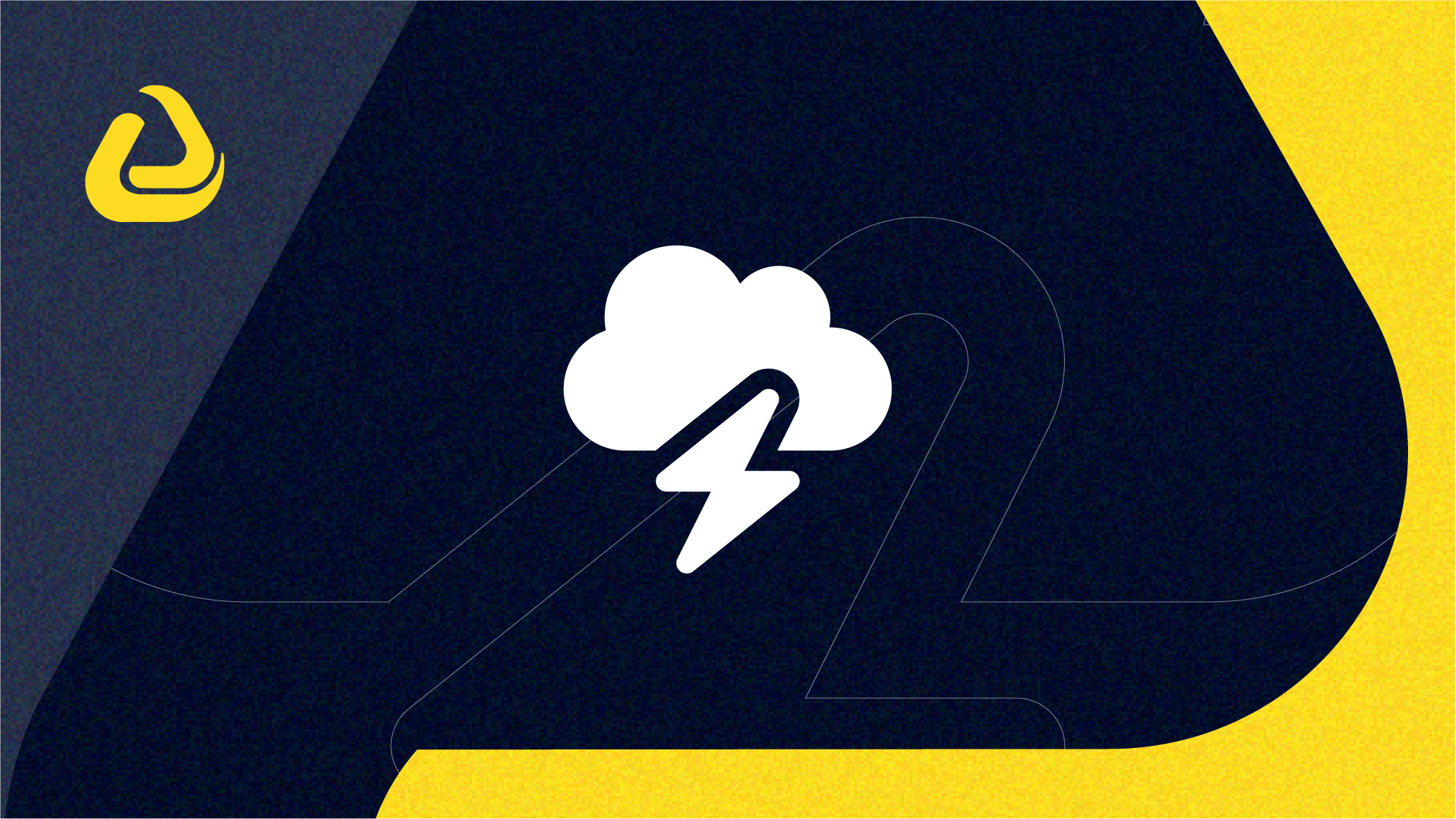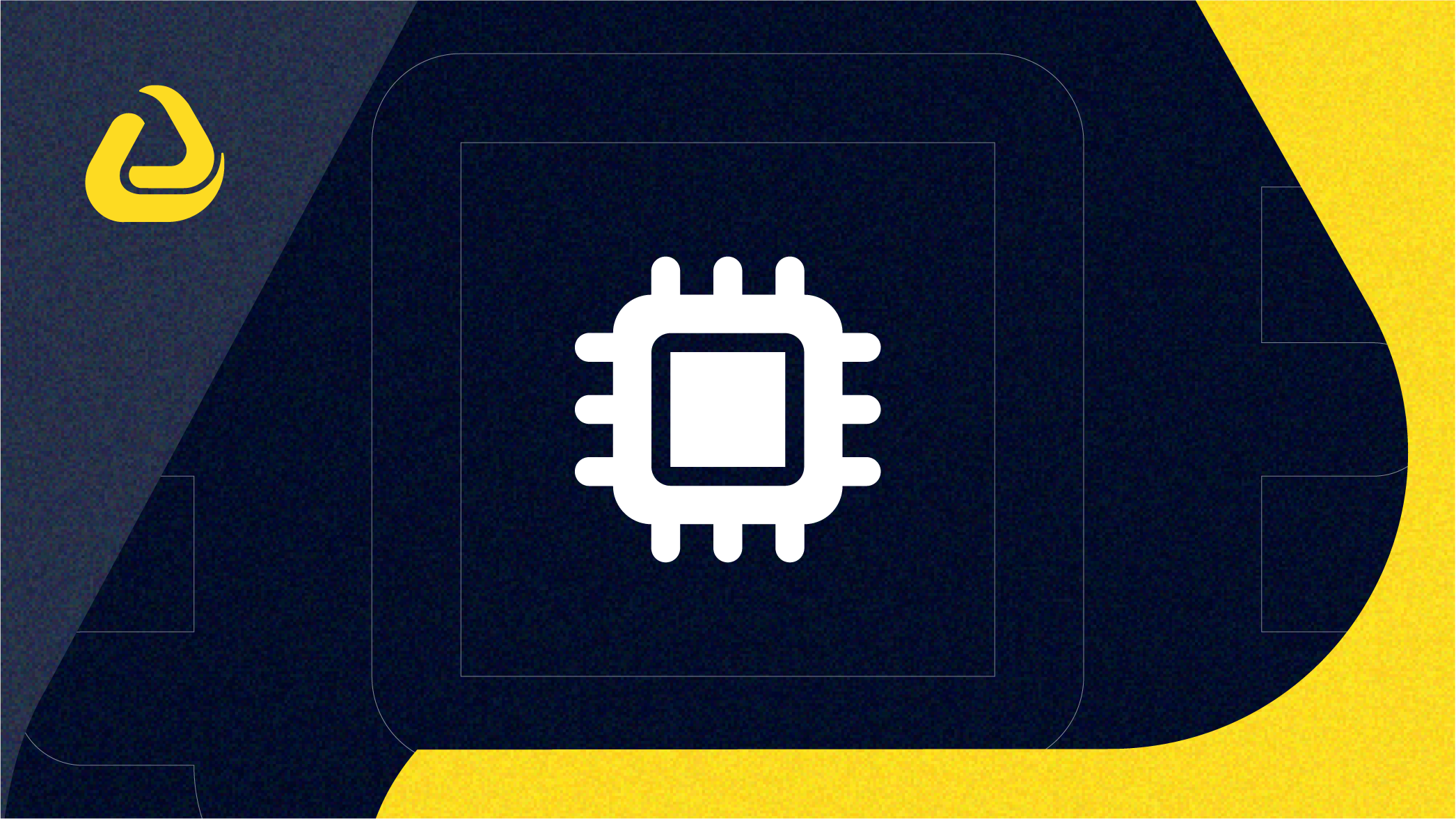Introduction
The utility industry plays a vital role in our communities, not only in everyday functionality but also as a critical component in disaster response and recovery. As natural disasters occur, the resilience of our utility infrastructure against these events is important. This resilience is not just about enduring disasters but ensuring a swift, effective response and recovery to minimize impact on public safety and infrastructure. The goal is to create a system robust enough to withstand the initial blow and agile enough to recover with minimal downtime. This level of preparedness and resilience involves innovative solutions that enhance our ability to predict, prepare, and respond to any disaster. It’s about leveraging the power of data, analytics, and technology to fortify our utilities and our communities. As we navigate through the challenges posed to our utility infrastructure, we will highlight how these tools can be lifelines, ensuring rapid recovery and long-term sustainability.
Natural Disasters

Hurricanes and Tropical Storms
Hurricanes and tropical storms pose significant challenges to the utility industry, disrupting essential services with their powerful winds and flooding. These natural events can damage infrastructure, lead to power outages, and contaminate water supplies, impacting public health and economic stability.
Proactive Measures and Advanced Tracking: The key to minimizing these disruptions lies in proactive measures and advanced storm tracking. By leveraging real-time situational awareness platforms, utilities gain a dynamic understanding of storm paths, allowing for preemptive actions such as targeted shutdowns. This approach protects infrastructure and ensures community safety.
Rapid Deployment and Recovery: These technologies enable utilities to mobilize emergency response teams effectively, allocate resources efficiently, and communicate potential evacuation zones to communities. Following the storm, real-time data and detailed assessments expedite the restoration of services, reducing recovery times.
Enhancing Resilience: The adoption of advanced technologies for storm tracking and situational awareness significantly enhances the utility industry’s resilience. Utilities are not only able to respond more effectively to hurricanes and tropical storms but also ensure a quicker, safer recovery process for affected communities.
By embracing these innovations, the utility industry strengthens its preparedness for hurricanes and tropical storms, safeguarding infrastructure and community well-being against future challenges.
Wildfires
Wildfires pose a significant challenge to the utility industry, threatening electrical infrastructure and community safety. The risk of wildfires igniting from power lines and rapidly damaging the grid underscores the need for effective prevention and response strategies.
Strategic Vegetation Management: Proactive vegetation management near power lines plays a critical role in reducing ignition risks. This strategy is fundamental but needs to be complemented by early detection and coordinated response efforts to effectively manage wildfire threats.
Technological Innovations in Wildfire Management: The use of advanced mapping and aerial imagery technologies has transformed wildfire response. These tools allow for the precise identification of fire hotspots and spread patterns, facilitating swift decision-making on resource allocation, power rerouting, and emergency shutdowns to minimize damage.
Informed Decision-Making and Enhanced Resilience: Beyond immediate firefighting efforts, these technologies enable a deeper analysis of fire behavior and risks, guiding infrastructure improvements and resilience-building measures. By learning from past incidents, utilities can proactively address vulnerabilities, enhancing their preparedness for future wildfires.
Towards Predictive Disaster Management: The adoption of advanced mapping and imagery tools signifies a shift towards more predictive and preventative approaches to disaster management. As wildfires become an increasing concern, leveraging such technologies is essential for protecting electrical infrastructure and ensuring community safety.
By prioritizing advanced technological solutions and proactive strategies, the utility industry strengthens its capabilities to combat the growing threat of wildfires, safeguarding both infrastructure and the communities it serves.
Earthquakes
Earthquakes present a formidable challenge to utility infrastructure, striking suddenly and with little warning. The ability of utilities to swiftly recover and restore critical services after such events is paramount, demanding a comprehensive strategy for resilience.
Seismic Retrofitting: A key element in earthquake preparedness is seismic retrofitting. By reinforcing power stations, water and gas pipelines, and communication towers, utilities can significantly mitigate the risks of catastrophic damage. These upgrades are vital for maintaining service continuity or enabling faster restoration post-earthquake.
Adaptive Emergency Response Plans: Tailored emergency plans are crucial for an effective response to seismic events. These should outline immediate actions, repair prioritization, and resource deployment, all within a framework that allows for quick adaptation to the unpredictable nature of earthquakes. Clear communication channels and command protocols are essential for navigating the aftermath of a quake.
Technological Advancements for Enhanced Response: Leveraging modern technology, such as seismic monitoring systems and predictive analytics, is critical for assessing damage and directing recovery efforts efficiently. These tools offer real-time insights into the impact on infrastructure, guiding targeted responses where they are most needed.
A Proactive Approach for Greater Resilience: The unpredictability of earthquakes underscores the need for utilities to adopt a proactive stance towards resilience. Investments in retrofitting, along with the development of flexible emergency plans and the integration of advanced technologies, equip utilities to better withstand earthquakes. More importantly, these measures ensure that communities can rely on essential services during critical times, enhancing overall resilience.
Floods
Floods present a complex challenge to utility infrastructure, threatening water purity, damaging facilities, and causing power outages. The task of managing flood risks is intricate, necessitating an in-depth understanding of geographic vulnerabilities and hydrological patterns.
Leveraging Advanced Data Platforms: Key to effective flood management is the use of advanced data integration platforms. These tools enable the analysis of diverse data sets, including weather patterns and geographic information, to provide a comprehensive view of potential flood impacts. Such insights allow utilities to identify high-risk areas and implement preemptive measures.
Dynamic Visual Mapping for Mitigation and Communication: Interactive mapping features of these platforms play a crucial role in both planning mitigation strategies and communicating risks to communities. Through dynamic visualizations, utilities can outline evacuation routes and safety measures, making complex information easily understandable for the public.
Continuous Risk Assessment for Enhanced Preparedness: The adoption of these technologies facilitates ongoing flood risk assessments, enabling utilities to adapt their strategies based on real-time data and predictive modeling. This approach shifts flood management from a reactive to a proactive stance, emphasizing prevention, preparedness, and swift recovery.
Facing Increasing Flood Risks: With the challenges of climate change and urban development, embracing advanced data integration platforms marks a significant advancement. These technologies empower utilities to protect infrastructure, ensure public health, and bolster community resilience against floods.
The Utility Industry’s Preparedness Strategies

Risk Assessment and Management
At the heart of disaster preparedness for the utility industry lies the critical process of risk assessment and management. This essential strategy involves a detailed analysis to pinpoint vulnerabilities across utility operations that could be exposed by natural and disasters.
Comprehensive Analysis for Robust Strategies: The process begins with an in-depth examination of potential risks, assessing everything from the physical durability of infrastructure to the resilience of operational and emergency response protocols. This analysis covers a wide spectrum, including the impact of severe weather on infrastructure and the risk of cyberattacks on control systems.
Tailored Mitigation Strategies: Upon identifying these vulnerabilities, utilities develop specific risk management strategies aimed at fortifying the infrastructure against potential threats. These strategies might include physical infrastructure enhancements, such as flood barriers or seismic reinforcements, and technological implementations for early warning and rapid response systems. The creation of detailed emergency response plans is also a pivotal element, ensuring readiness for swift service restoration.
Dynamic Adaptation and Collaboration: Risk management is a dynamic, ongoing process, necessitating regular revisions to adapt to new threats and changing environmental conditions. This adaptive approach is crucial for maintaining resilience and ensuring the utility’s capacity to recover from interruptions swiftly.
Collaboration is key in this endeavor. By sharing insights, resources, and best practices with government agencies, emergency responders, and the broader community, utilities strengthen the collective capacity to face, manage, and overcome disasters. This cooperative framework bolsters the overall network of safety and resilience that supports society.
Risk assessment and management form the cornerstone of the utility industry’s preparedness, enabling the identification and strategic mitigation of vulnerabilities. Through comprehensive analysis, tailored strategies, and ongoing adaptation, utilities enhance their resilience, ensuring they can provide reliable services and safeguard community well-being in the face of diverse challenges.
Infrastructure Resilience
Infrastructure resilience is critical in today’s world, where the utility industry faces an increasing frequency of both natural and human-made disasters. This resilience encompasses not only the capacity to withstand such events but also the ability to recover quickly, minimizing service disruptions.
Technological Enhancements for Resilience: The role of modern technology in building resilience cannot be overstated. Tools like geospatial mapping and infrastructure analysis are vital for pinpointing vulnerabilities and understanding disaster impacts on utility networks. These technologies enable utilities to proactively address potential failure points based on data-driven insights into geography, weather patterns, and infrastructure specifics.
Smart Grid Innovations: The adoption of smart grid technologies showcases the effectiveness of technological advancements in enhancing resilience. With features like real-time monitoring and automated responses, smart grids can isolate and manage damaged sections, significantly mitigating damage and accelerating recovery efforts.
Physical Strengthening Measures: Complementing technological solutions, physical reinforcements are equally essential. Upgrades to materials and infrastructure design can dramatically improve durability against extreme weather, seismic events, and flooding. Additionally, strategic use of natural barriers, such as wetland areas around water utilities or vegetation buffers for power utilities, can offer effective protection against floods and wildfires.
A Holistic Strategy: Achieving infrastructure resilience requires a comprehensive strategy that merges technology with physical upgrades. This holistic approach ensures a balanced resource allocation to address a broad spectrum of disaster scenarios. Continuous innovation and adaptation to emerging threats and new technologies are crucial for maintaining and enhancing this resilience.
Investing in both technological and physical improvements is imperative for the utility industry to ensure its infrastructure remains a dependable support system for communities, even in the face of severe challenges.
Emergency Response and Recovery Planning
Effective emergency response and recovery planning are critical for the utility industry to adeptly manage and mitigate the impacts of disasters, ensuring public safety and minimal service disruption. These plans, essential for a coordinated and efficient response, comprise several key steps:
Hazard Identification and Risk Assessment: Begin with identifying potential hazards and assessing risks by analyzing historical data, climate trends, and geographic vulnerabilities. This foresight enables utilities to anticipate and prepare for various emergency scenarios.
Resource Inventory and Capability Assessment: Inventory available resources, such as personnel, equipment, and technology. Assessing these resources’ capabilities and identifying gaps ensures readiness and facilitates timely enhancements or partnerships.
Coordination with Emergency Services: Forge strong connections with local emergency services to integrate utility response efforts into a broader emergency management framework, ensuring efficiency and effectiveness.
Development of Response Plans: Armed with an understanding of potential hazards and resources, utilities can craft detailed plans for various scenarios. These plans assign responsibilities, outline specific actions, and establish communication protocols.
Training and Drills: Conduct regular training and simulations to familiarize personnel with the plans, ensuring they can perform under pressure and highlighting areas for plan improvement.
Public Communication Strategies: Develop strategies for informing the public about risks, ongoing response efforts, and recovery progress. Transparent communication is key to maintaining trust and safety.
Recovery Planning: Look beyond immediate response to strategize rapid service restoration, infrastructure repair, and community support post-disaster. Reviewing each response to identify lessons learned is vital for enhancing future preparedness.
Continuous Improvement: Treat planning as a dynamic process, updating strategies to account for new risks, technological advancements, and insights from past experiences.
By emphasizing these steps, utilities reinforce their commitment to resilience, ensuring readiness to protect communities and facilitate a swift recovery. This streamlined approach highlights the utility sector’s role in disaster response and recovery, focusing on preparation, action, and continuous evolution.
Community Engagement and Awareness
Community engagement and awareness are cornerstone practices in the utility industry’s disaster preparedness efforts. By educating the public about how to prepare for and respond to disasters, utilities empower communities, enhancing overall safety and facilitating quicker restoration times post-disaster. Here’s a streamlined approach to how utilities can foster this critical engagement:
Educational Initiatives: Implementing programs and workshops that detail emergency preparedness, evacuation planning, and utility safety can significantly uplift community resilience. These initiatives should focus on practical advice tailored to the risks of the local area.
Safety Communication: Regularly disseminating safety tips through newsletters, social media, and community events ensures disaster preparedness remains a priority for the public. Highlighting how to safely manage utilities during outages, including the proper use of generators and the dangers of downed power lines, is crucial.
Restoration Process Transparency: Clear communication about the steps and timelines for service restoration helps manage community expectations during disruptions. Utilizing websites, social media, and local media partnerships can aid in delivering these messages effectively.
Partnerships for Preparedness: Collaborating with schools, community groups, and emergency services amplifies the reach of preparedness initiatives. These partnerships can support the distribution of educational materials and the organization of community-wide preparedness events.
Digital Engagement: Leveraging digital platforms for interactive learning experiences, such as webinars or virtual tours, makes preparedness information more accessible. Online games and quizzes can also engage younger audiences in disaster readiness.
Community Feedback: Establishing feedback mechanisms allows utilities to gauge the effectiveness of their engagement efforts and adapt strategies accordingly. Listening to community insights ensures continuous improvement in communication and preparedness initiatives.
Awareness Campaigns: Conducting public awareness campaigns, particularly as disaster seasons approach, reinforces the importance of preparedness. These campaigns, utilizing local influencers and targeted advertising, can broaden the impact of preparedness messages.
Through active engagement and open communication, utilities do more than inform—they cultivate a partnership with the communities they serve. This collaborative approach is vital for building resilient communities ready to face disasters together, ensuring a swift and organized recovery process.
Leveraging Technology for Enhanced Preparedness

In today’s fast-paced and increasingly unpredictable world, the utility industry’s capacity to prepare for, respond to, and recover from disasters is being significantly transformed by technology. Advanced tools like predictive analytics, remote sensing, and Geographic Information Systems (GIS) mapping are at the forefront of this transformation, offering unparalleled opportunities to enhance disaster management and response. Here’s how these technologies are making a difference:
Predictive Analytics: The power of predictive analytics lies in its ability to sift through vast amounts of data, identifying patterns and predicting the likelihood of future events. For utility companies, this means being able to anticipate potential disaster impacts with a degree of precision previously unattainable. By analyzing historical weather patterns, infrastructure vulnerabilities, and population dynamics, utilities can forecast the areas most likely to be affected by disasters. This foresight enables a more strategic allocation of resources, from pre-positioning repair crews and equipment to implementing targeted evacuation or shutdown procedures before a disaster strikes.
Remote Sensing: Remote sensing technology, including satellite imagery and aerial drones, provides real-time data on disaster conditions, offering a bird’s-eye view of impacted areas. This capability is crucial for assessing the extent of damage, monitoring disaster progress, and coordinating effective response efforts. In the aftermath of an event, remote sensing can aid in the rapid assessment of infrastructure damage, allowing utilities to prioritize repair efforts and restore services more quickly.
GIS Mapping: GIS mapping is a powerful tool that combines location data with information on infrastructure, environmental conditions, and community assets. For utilities, GIS mapping offers a platform for visualizing the impact of disasters on critical infrastructure and the surrounding community. By overlaying maps with real-time data on weather conditions, flooding, or fire spread, utilities can gain a comprehensive understanding of the situation as it unfolds. This facilitates more informed decision-making and enhances the coordination of response efforts with emergency services and local authorities.
Together, these technologies represent a shift in how utilities approach disaster preparedness and response. The integration of predictive analytics, remote sensing, and GIS mapping into disaster management strategies allows utility companies to move from a reactive to a proactive stance. By leveraging these tools, utilities can enhance their situational awareness, improve the accuracy of their risk assessments, and execute more effective disaster response and recovery plans.
The adoption of these advanced technologies not only enhances the resilience of utility infrastructure but also protects communities and minimizes the economic and social impacts of disasters. As utilities continue to embrace these tools, their role in fostering a more prepared and resilient society becomes increasingly vital, demonstrating the power of technology to transform our collective ability to face the challenges of tomorrow.
Conclusion
Disaster resilience in the utility industry is essential for preparedness and quick recovery. Facing natural disasters requires strategic planning, innovation, and community cooperation. Technologies such as predictive analytics, remote sensing, and GIS mapping continue to transform disaster management by enabling precise risk assessments and effective response strategies. Effective use of these technologies is vital for improving resilience. Resilience will rely on collaboration among utilities and surrounding agencies. Intterra can help you achieve this technological need, offering tools that help utilities efficiently manage disaster planning, response, and recovery.